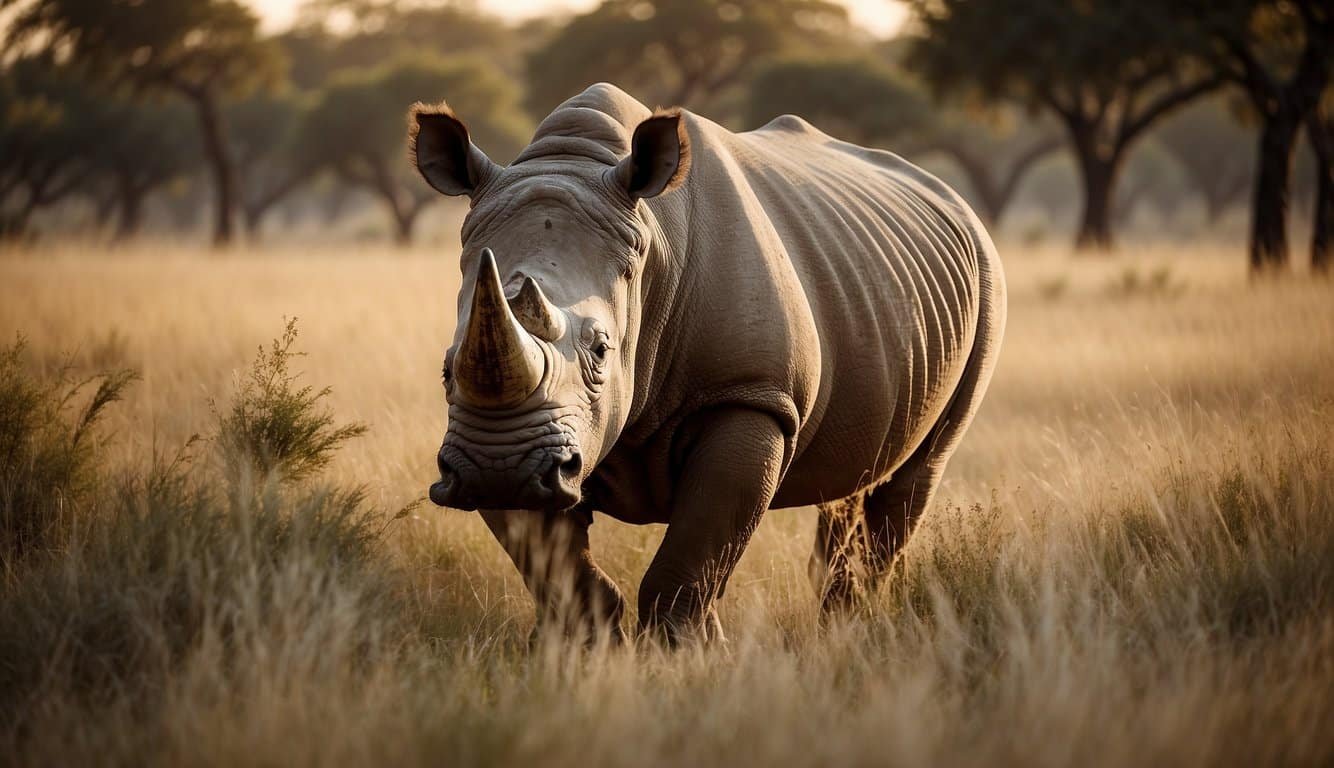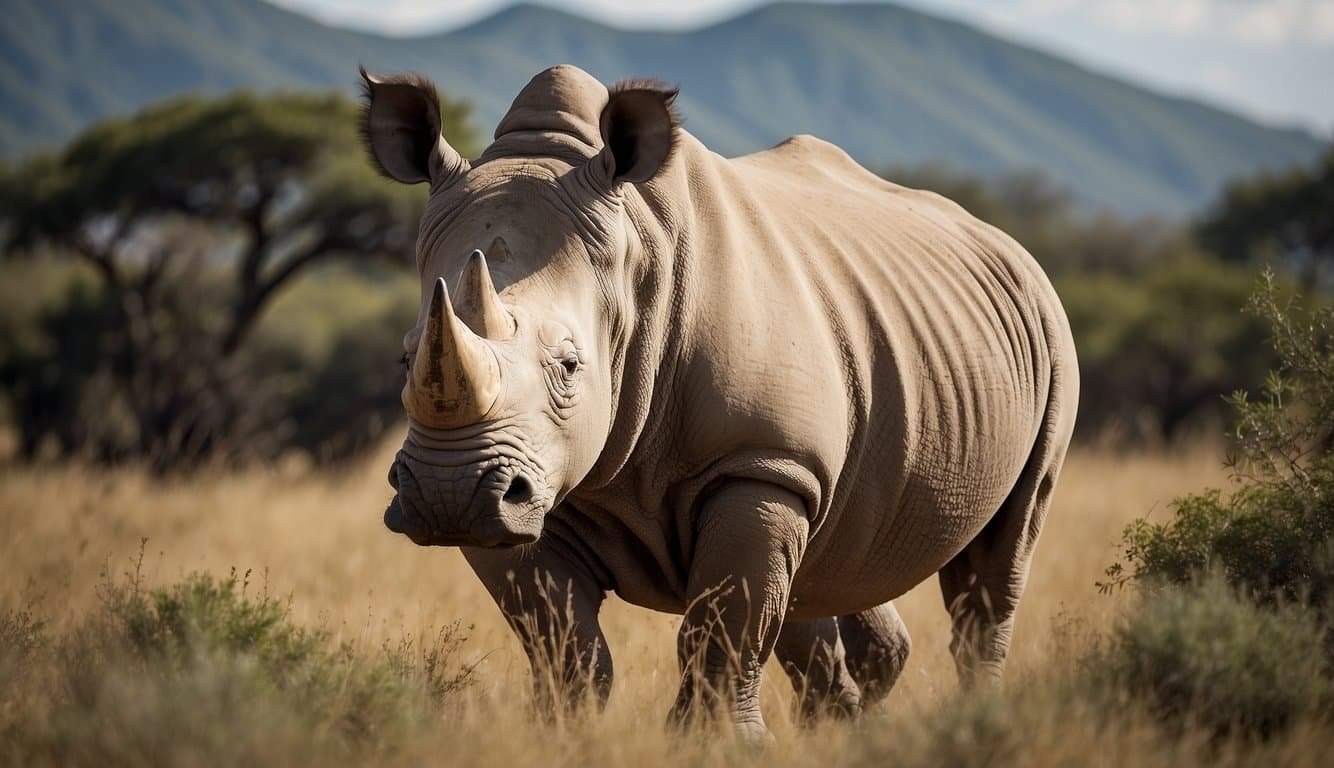Physiology and Behavior

White rhinos, the second-largest land mammal, are distinguished by their immense size, wide mouth, and two horns adorning their snouts. They exhibit both solitary and social behaviors, with the dominant males often defending their territory fiercely.
Specific Regions and Reserves
White rhinos are native to sub-Saharan Africa and are primarily found in grassland and savannah habitats. The Ol Pejeta Conservancy in Kenya is known for its efforts in white rhino conservation. Here, these mammals enjoy the grassy plains, which are ideal for their grazing habits. Meanwhile, countries like Botswana, Uganda, and Zambia have also taken significant strides in providing sanctuaries for these majestic creatures.
In terms of behavior, white rhinos can be social; females are often seen with their calves, while adult males generally lead solitary lives, apart from breeding periods. The gestation period for a female white rhino is around 16 months, and the birth of a single calf is common.
Despite their massive size—they can weigh up to 2,500 kg and stand as tall as 1.8 meters at the shoulder—white rhinos are herbivores. They spend the majority of their day eating grass and seeking out water holes and mud wallows to help regulate their body temperature and protect their skin from the sun and insects.
The conservation of white rhinos in specific regions and reserves has a critical impact on their behavior and breeding. Reserves provide a controlled environment where rhinos can exhibit natural behaviors without the immediate threat of poaching, which is a constant danger in the wild. Each horn, made of keratin—the same material as in human hair and nails—although not as commonly targeted as those of the black rhino, still poses a significant threat to this species’ survival due to illegal wildlife trade.
Conservation Status and Threats

The white rhinoceros is split into two subspecies: the southern white rhinoceros (Ceratotherium simum simum) and the much rarer northern white rhinoceros (Ceratotherium simum cottoni). While the southern white rhinoceros is relatively abundant, the northern counterpart teeters on the brink of extinction with only a few individuals left, all of which are under constant surveillance at Ol Pejeta Conservancy.
The IUCN Red List categorizes the southern white rhino as “Near Threatened,” primarily due to poaching fueled by the demand for rhino horn. Rhino horns are believed to hold medicinal properties in some cultures, despite being composed of keratin, the same substance found in human hair and nails. This high value leads poachers to risk penetrating the rhinos’ territories, which can span significant areas due to their grazing habits.
These magnificent creatures usually form groups called herds or crash, consisting of mostly females and their calves. Males, known as bulls, tend to be solitary and territorial, marking their areas with piles of dung and sprays of urine. White rhinos, also known as square-lipped rhinos, have a broad mouth suitable for grazing on grasses. They spend most of their time in pursuit of shade and water, as the African sun can be unrelenting. They share their habitat with other iconic species such as elephants and black rhinos, contributing to the rich biodiversity of their ecosystem.
With a gestation period of around 16 months, white rhinoceroses do not reproduce quickly. After birth, calves stay with their mothers, weaning off approximately at two years of age. These extended parental demands further stress their population growth, compounding the impacts of poaching and loss of habitat.
With concerted conservation efforts and anti-poaching patrols, there is a ray of hope for these gentle giants. However, without sustained and robust conservation strategies, the future of the white rhinoceros remains uncertain.

